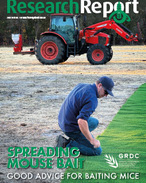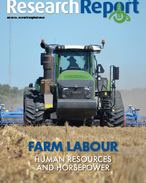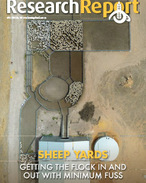This article is 8 years old. Images might not display.
A large amount of grain likely to be left on the ground after this season’s record-breaking harvest could promote a surge in mouse numbers and activity.
Storage experts have warned that grain stored in bunkers established close to harvested crops could be at risk.
Southern cropping region grain storage specialist Peter Botta said growers needed to seriously consider where they locate bunkers, how they are set up and their ongoing management.
“With such big crops this year, more grain is likely to be spilt than usual, even if growers are careful,” Botta said.
“We can see that there is potential for a problem with mice – so meticulous attention needs to be given to bunker storages.
“I strongly encourage growers to locate their bunkers as far away as possible from any cropping areas so that the likelihood of mice travelling from crop stubbles to bunkers is reduced.
“And when tarping the bunkers, make sure that all folds and creases are eliminated so that entry points for mice are minimised.”
If baiting of mice is required, Botta said avoidance of grain contamination is critical.
Other general requirements for successful bunker storage include a well-prepared and compacted pad that is sloped to drain water away from the site.
Hay bales should not be used in the construction of bunker walls, according to Botta.
“They might be a cheap alternative for creating walls but they lead to serious issues when treating stored grain insect pests,” he says. “During gassing, the bales act as a safe harbour for insects which then move back into the stored grain after treatment.”
Botta said effective fumigation of grain stored in bunkers was difficult to achieve, because a bunker can’t be pressure tested for gas tightness.
Instead, monitoring equipment is required to ensure gas concentration remains at a lethal concentration for the required period of time to kill pests at all life stages.
“Poor fumigations in bunkers leads to resistant insects which are already costing growers and the wider industry more money to control,” Botta said.
“Overflow storage is not ideal storage. It’s important to remember that bunkers are a form of temporary storage and therefore grain should be moved into permanent storage as soon as the opportunity becomes available.”
Further information on temporary storage best practice is available from the GRDC’s Stored Grain Information Hub.






















